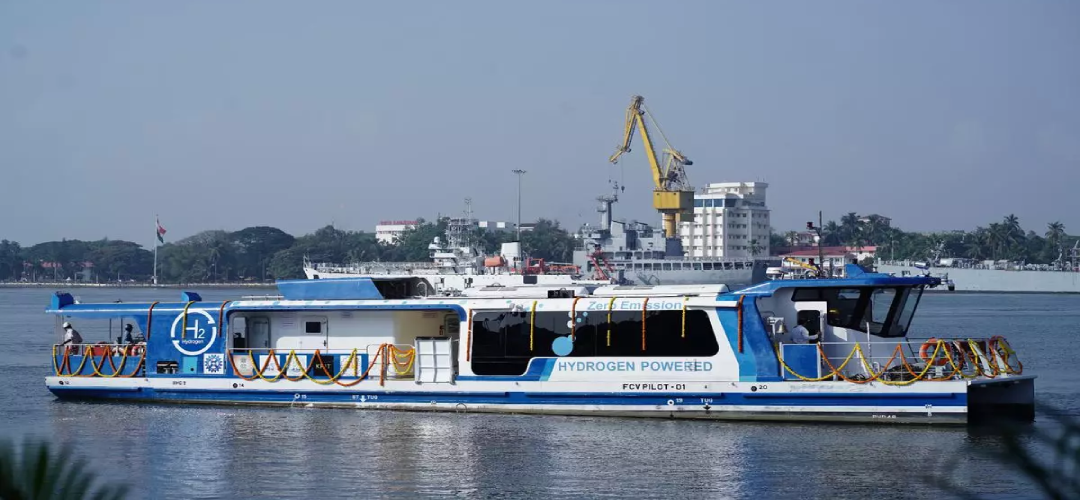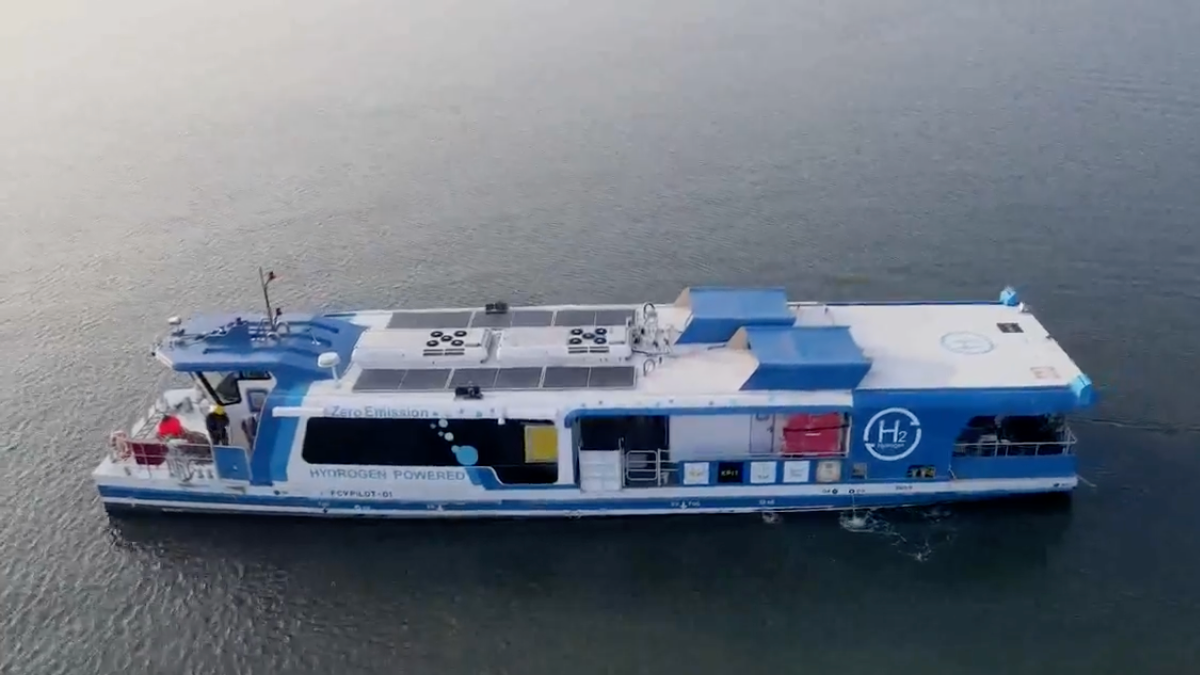India's First Hydrogen Cell Ferry Flagged Off
March 9, 2024 | Expert Insights

Background
The Harit Nauka initiative, unveiled by India's Shipping Ministry, sets guidelines for green fuel usage in inland waterway vessels. It aims for 50% of inland passenger fleets to utilise green fuels within a decade and 100% by 2047, aligning with the Maritime Amrit Kaal Vision 2047 to reduce greenhouse gas emissions. This initiative underscores India's commitment to sustainable and eco-friendly maritime transport. Prime Minister Narendra Modi flagged off India's first indigenous hydrogen fuel cell ferry on 28 February 2024. The ferry, a part of the Harit Nauka project, underscores India's commitment to reducing greenhouse gas emissions and advancing green mobility solutions. It represents a significant step towards sustainable marine transport, keeping to the country's broader environmental goals.
This project involves a collaborative effort between Cochin Shipyard Limited (CSL) and other indigenous technologies developed by KPIT Technologies and the Council of Scientific and Industrial Research Labs. CSL spearheading the initiative likely stems from its established expertise and infrastructure in shipbuilding and repair. CSL is one of India's leading shipyards and has the capabilities to undertake large-scale and technologically advanced projects like the hydrogen fuel cell ferry, fostering India's green mobility and sustainability goals. This strategic choice leverages CSL's experience, facilitating the integration of innovative green technologies in maritime transport.
By leveraging cutting-edge hydrogen fuel cell technology, the ferry operates with zero emissions, contributing to cleaner waterways. Its introduction is part of a larger vision to incorporate green fuels in India's inland waterways, aiming for a substantial shift towards eco-friendly transportation by 2045. This 24-meter-long catamaran ferry can accommodate up to 50 passengers. It is notable for its zero-emission, minimal noise propulsion system, powered by a 50-kW Proton-Exchange Membrane fuel cell and Lithium-Ion Phosphate batteries. Additionally, the vessel features onboard hydrogen storage and a solar panel for extra energy generation. It highlights India's prowess in maritime innovation and sets a precedent for integrating sustainable practices in the transport sector, reflecting a proactive approach to environmental stewardship.
The ferry was flagged off during a ceremony in Thoothukudi, Tamil Nadu, to lay the groundwork for a ₹17,300-crore project there. These included the laying of the foundation stone for the outer port at the V.O. Chidambaranar Port, the inauguration of 75 lighthouses throughout ten states and union territories, and the dedication of numerous rail and road network projects, according to a news statement from the news Information Bureau (PIB). The V.O.Chidambaranar Port is pioneering India's move towards green energy by becoming the country's first Green Hydrogen Hub Port. This initiative includes establishing a desalination plant to provide the necessary water for hydrogen production, a facility for producing green hydrogen, and a bunkering station to supply hydrogen fuel for ships and other transport modes.

Analysis
India is making a notable step towards its sustainability and zero-emission goals in tourism. It's important to consider that the specific share of emissions from marine tourism in India would depend on several factors, including the volume of marine tourism relative to other forms of tourism, the energy efficiency of marine vessels, and the fuel types used. Given the global statistics, it's clear that tourism, including marine tourism, has a substantial environmental footprint that needs to be addressed as part of broader sustainability efforts. The Union Cabinet has authorised the National Green Hydrogen Mission with an initial investment of Rs.19,744 crore to establish India as a global hub for the production, utilisation, and export of green hydrogen and its derivatives. The programme aims to create over 6 lakh jobs and generate over Rs. 8 lakh crore in total investments and aims to decrease fossil fuel imports and greenhouse gas emissions by 2030.
India has established many green hydrogen pilot projects to fulfil its 2030 target of 8 million tonnes of capacity. These projects include a green hydrogen production programme in Gurugram, Haryana, based on solar energy and electrolysis, as well as a green hydrogen production project at IISc Bangalore using biomass gasification. These projects are part of the country's larger effort, known as the National Green Hydrogen Mission, to expand green hydrogen production while also facilitating demand generation, production, utilisation, and export. The mission intends to support pilot projects in growing end-use industries and production pathways, as well as build Green Hydrogen Hubs in regions with large-scale hydrogen production or utilisation capabilities. These efforts demonstrate India's commitment to lowering its carbon footprint and moving towards a more sustainable energy future through the use of green hydrogen technology.








Comments